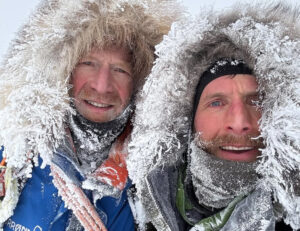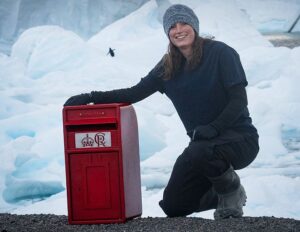A passion for the natural world drives many of our adventures. And when we’re not actually outside, we love delving into the discoveries about the places where we live and travel. Here are some of the best natural history links we’ve found this week.
Google Maps for the Antarctic: The same researchers who recently discovered Ernest Shackleton’s HMS Endurance in the Weddell Sea now want to create real-time ice charts for the Arctic and Antarctic. To track down the elusive shipwreck, they developed software to weave through the ice regardless of the weather. They believe that this has broader applications for polar shipping.
“We’re trying to set up what you could call the Google Maps of polar regions,” said geophysicist Lasse Rabenstein. This could be a leap forward for shipping and exploration in the polar regions.
Virus spread between animals and people
Humans often give viruses to animals: Earlier in the pandemic, researchers discovered that humans could spread the disease to hamsters, minks, leopards, lions, and tigers. In the U.S., humans passed Covid-19 to white-tailed deer, and data now suggests that the deer passed it back to humans.
It happens more often than previously thought. And this has implications for public health and conservation.
Researchers looked through historical records to find previous cases of human-to-animal transmission. They found 97 known cases. Half of these were human to primate, and over half took place in captive settings. This has raised concerns over the number of unknown pathogens that humans have introduced to wild animals.

Photo: Shutterstock
Squeeze and breathe
How boa constrictors breathe while squeezing the life out of their prey: When coiled around its prey, a boa constrictor squeezes so hard that it cuts off its victim’s blood circulation. But how do the large snakes breathe during this process? While squeezing, boa constrictors can’t take in air as they normally would.
It turns out that the snakes use part of their rear lungs to breathe. They are able to alternate the parts of the rib cage that expand and contract to allow their lungs to fill. By shifting the process further down their body, they can crush and breathe at the same time.
New treaty to protect whales in international waters: The World Wildlife Fund recorded the migration tracks of over 1,000 whales worldwide. Their data sheds new light on how far these giant mammals actually migrate every year. One humpback, for example, made a 19,000km round trip in 265 days. The study also reveals how dangerous the ocean has become for a number of species.
Climate change has affected the ability of many whales to find food, and ghost fishing and shipping are killing more of these cetaceans than ever before. Whales spend most of their time unprotected in the open ocean. Negotiations are now underway to establish a treaty to protect these underwater giants when they are in international waters, far from any coastline.
A mysterious fourth process
New solar waves defy physics: Scientists have discovered a new type of high-frequency wave on the sun’s surface. The high-frequency retrograde (HFR) vorticity waves were detected in the sun’s plasma.
Measuring acoustic waves on the sun is common practice, but these new waves moved three times faster than anyone thought possible. They are the fastest waves recorded on the sun in 25 years.
Scientists now think that they are onto something big. They currently know of three processes that can accelerate acoustic waves into HFR waves. “These waves don’t appear to be the result of these processes, and that’s exciting because it leads to a whole new set of questions,” said solar physicist Chris Hanson.

Photo: Shutterstock
New evidence in an old debate: Do animals feel?
Do molluscs and crustaceans have emotions? Scientists have long debated whether animals, particularly invertebrates, are sentient beings. For a long time, Western culture has pushed the narrative that animals do not feel pain or have emotion. Yet mammals, fish, octopuses, and crabs actively avoid pain and dangerous locations. Some animals, such as cows, even show signs of empathy.
A new UK report suggests that cephalopod molluscs and decapod crustaceans are sentient. This could open a Pandora’s box of ethical and moral dilemmas. “We don’t have sufficient science right now to know exactly what the proper treatment of certain species should be,” said Kristen Andrews, who co-authored the report.






